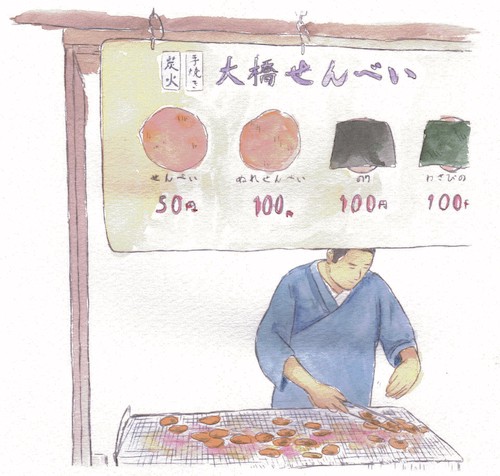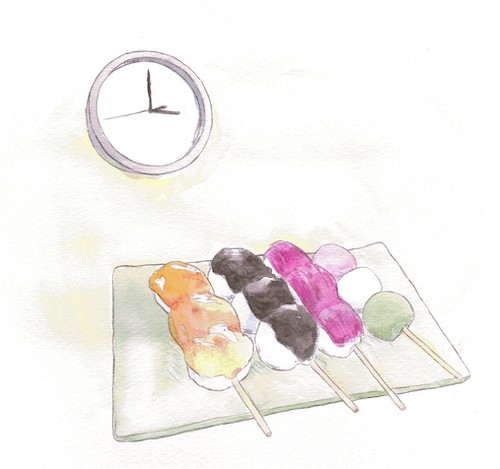
Prevent mindless munching with sanji no oyatsu
It seems that time at home has led to more people purchasing unhealthy processed foods: Mondelez, the maker of Oreos, announced that cookie and cracker sales shot up nearly 30% in the first quarter of 2020. And lots of people are concerned about the repercussions of easier access to a junk-stocked kitchen.
Nabisco/Mondelez is well aware of the concern surrounding their foods and has a “snacking made right” campaign to try and regain consumer trust. As part of their campaign, they released a video outlining tips for better mindful snacking with Oreos. Their tips included:
- Portion out your snack, for example by placing three Oreos on a plate to resist the urge to eat more.
- Smell your Oreos before eating it, to focus on taste.
- Pause and put the Oreo back on the plate between bites, to pace yourself.
Are you kidding me?
I turned to my sister who was sitting next to me and showed her the video. We both laughed at the ridiculousness of the advice but also felt a bit of frustration that these companies weren’t actually trying to be helpful, just producing useless fluff under the guise of being socially responsible. Is there a better way to snack without throwing it out of our pantry?
“Well, you think about America and they have snack time, but there’s actually no real defined time to it,” my sister mused. “But when you think about snack time in Japan, it’s always 3 p.m. Why is that?”

What is the 3 o’clock snack?
Sanji no oyatsuin Japanese reads “the 3 o’clock snack.” It’s not necessarily a proverb or an idea on how to snack, exactly, but behind the history of the phrase is a more deeply ingrained idea as to what mindful snacking is.
Snack in Japanese is read 御八つ (oyatsu), and its origin is said to be from the time 八刻 or “yatsudoki” used in the Edo period, which refers to the time from 2 to 4 p.m. So “oyatsu” used to mean that time between lunch and dinner, a time for some food, and a short break.
It’s interesting because every country has a history of snacking or break time, but consider one of the origins of Western snack time: England’s world-famous afternoon tea. In Japan, however, yatsudoki was a snack time developed by the working class. Now “oyatsu” refers to a snack regardless of what time it is, but the roots of the term persist today.

On modern Japanese snacking
Sanji no oyatsu reinforces the idea that snacking deserves its own recognition, hence a boundary to help us make better decisions about how we eat. In this way it’s not a mindless activity, but choosing to eat with a goal in mind:
- A satisfying snack that will carry you until your next meal
- Or a snack that will help you relax and refresh a bit midday
- Or both!
With a purpose in mind, decisions around eating are made to satiate our needs, which helps prevent overeating. So with a bit of awareness behind your instinct to snack, you can make better decisions on what and how you should eat.
To satisfy a hunger craving
- Pick something nutrient-dense, protein- or fiber-rich — things like nuts, dark chocolate, yogurt, avocado toast, or anything that will fill you up.
- Drink some water with your snack to ensure you’re not confusing dehydration for hunger.
To satisfy your need for a break
- Pick something you enjoy — choosing a food that satisfies but gives you no joy will not satisfy your need to continue eating.
- Put yourself in a relaxing environment: away from the computer and phone, away from the desk. Grab a friend or family member to join you if you can, or sit by a window and look outside as you eat. Break time doesn’t need to be an hour, but even just a designated 10 minutes to enjoy something will help you relax and refresh.
It’s important to be aware of our needs: By meeting them, we’re less likely to snack with abandon. If we aren’t aware we are snacking to satisfy hunger, we will choose foods that won’t fill us and will keep us craving more. If we aren’t aware we are snacking to relieve stress, we will choose a snack that gives us no joy or relaxation, and we perpetuate the cycle of stress eating.
So forget sniffing your Oreos and putting your cookie down between each bite, and instead consider what need you’re trying to satisfy to make better decisions about what and how to eat: This is the key to mindful eating.


If you enjoyed this piece, please email me at kokumura@kakikata.space! I welcome comments and questions on healthy eating and look forward to hearing from you 😊 Warm regards, Kaki